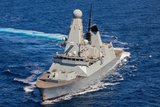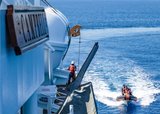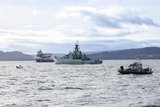Analysis: Waters rage in South China Sea (Part 1)
On 12 July the Permanent Court of Arbitration (PCA), at The Hague, handed down a landmark decision in a case the Philippines had brought against China in 2013 regarding Beijing’s expansive maritime claims in the South China Sea.
Many were stunned by the comprehensive nature of the PCA’s verdict in Manila’s favour. Indeed, the decision was nothing less than a damning indictment of Chinese policy and behaviour. Andrew Erickson, professor of strategy at the US Naval War College, commented: ‘This is a remarkable victory for the Philippines. Many will be struck by the fact that the tribunal found Beijing to
Already have an account? Log in
Want to keep reading this article?
More from Naval Warfare
-
![Canadian Coast Guard’s OOSV delivery is “major milestone” in fleet modernisation]()
Canadian Coast Guard’s OOSV delivery is “major milestone” in fleet modernisation
The Polar Class 6 platform is the largest CCG science-dedicated vessel and will operate on the country’s east coast.
-
![How the Anduril-HHI autonomous ship plan fits in with the US Navy’s MASC programme]()
How the Anduril-HHI autonomous ship plan fits in with the US Navy’s MASC programme
The new modular vessel is expected to be developed for both commercial and defence use, with a heavy focus on production speed and mission flexibility.
-
![Indo Pacific 2025: Autonomous systems reigned but can the Australian Defence Force afford it?]()
Indo Pacific 2025: Autonomous systems reigned but can the Australian Defence Force afford it?
Multiple autonomous systems and technologies were on display at this year’s Indo Pacific, but questions remain over how the Australian Department of Defence will balance the books.
-
![How the UK Royal Navy is powering up its hybrid fleet to combat new threats]()
How the UK Royal Navy is powering up its hybrid fleet to combat new threats
Since it announced its move towards a new “hybrid navy” earlier this year, the force has announced a number of new uncrewed technologies in the works.























